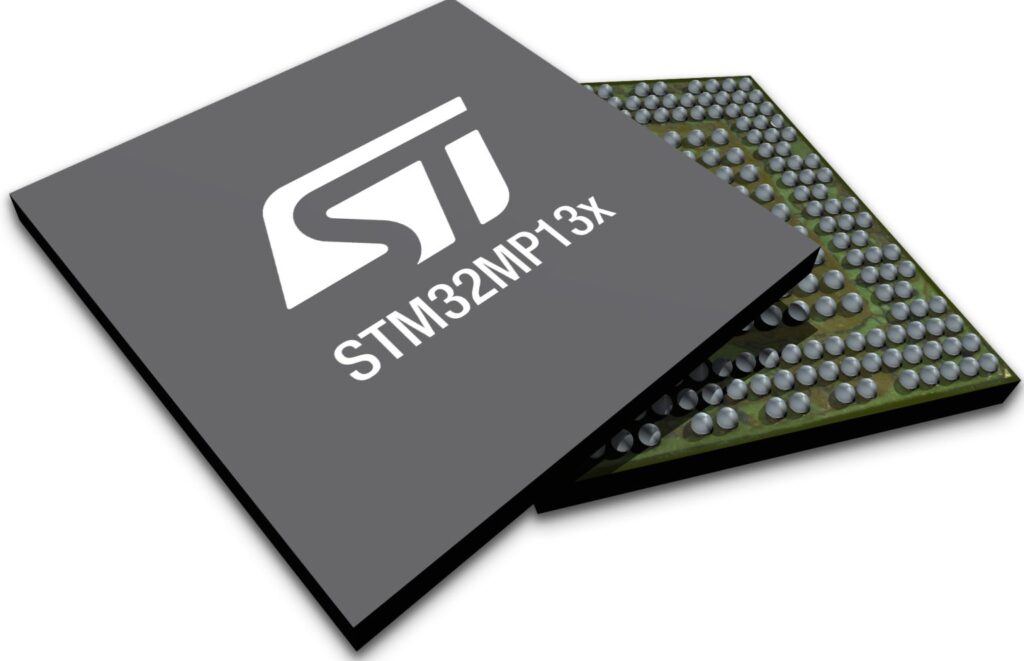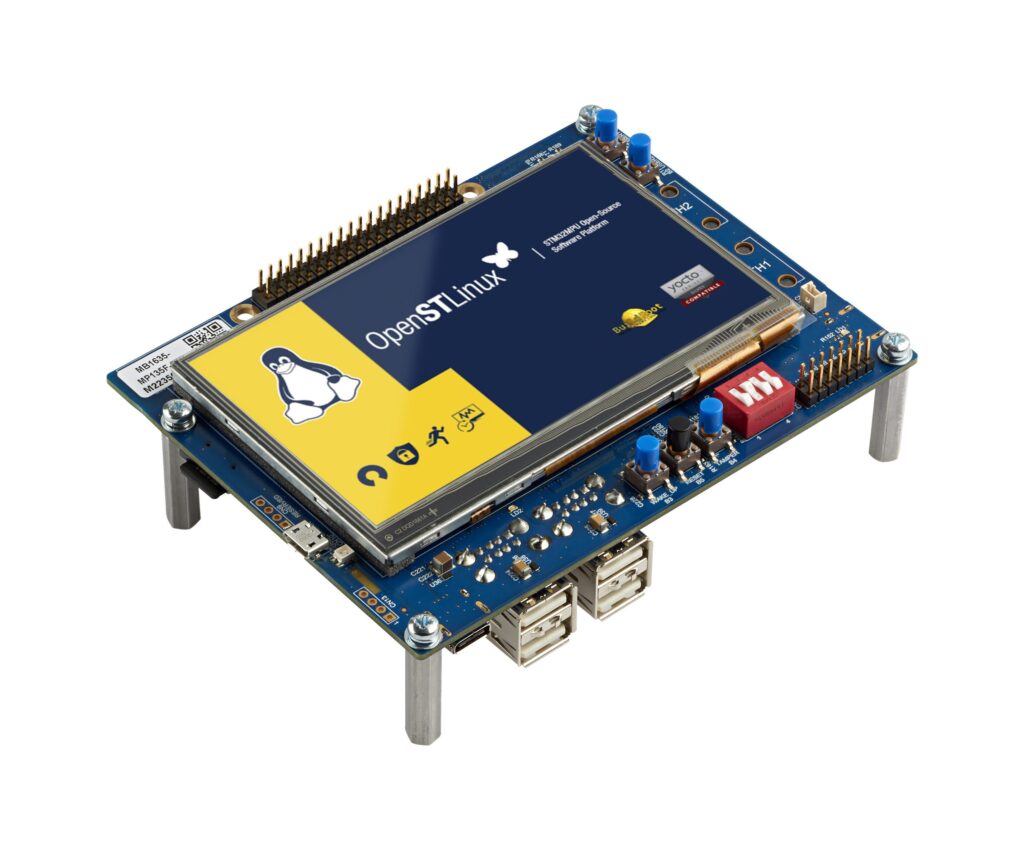More relevant approach

Too many teams have experienced the challenge of a low bill of materials that forces them to spend excessive time in development or support or pushes design considerations that end up blowing up budgets. Put simply, a seasoned engineer knows that a low price can have a high cost. That’s why the new STM32MP13 used an architecture designed with efficiency and accessibility in mind. For instance, we decided to remove the GPU since industrial applications at this price point rarely need one, but we added a second Ethernet port and a new pipeline to process camera images more effectively with up to 15 frames per second at 5 Megapixels.
Low power consumption
Another way a low price can trigger high costs is if the device has a high energy consumption that requires heavy cooling solutions, large power supplies, and more. That’s why ST worked to make the STM32MP13 a new reference in MPU power consumption. For instance, its Standby mode uses 27 µW, which is 94% less than the competition, and its Stop mode only requires 11 mW, about three times less than other brands. Similarly, the LPLV-Stop2 mode consumes 1.64 mW, or 32% less than the competition, while still waking up in 0.009 seconds. Finally, VBATBAT only needs 4.65 µW, which is about 19 times or 95% better than alternatives from other makers.
Design examples
Evidently, the low power consumption of the STM32MP13 will help design a simpler PCB. And to go one step further, ST also provides layout examples for four-layer plated-through hole PCBs. Not only do we simplify designs, but we also optimize developments by providing references so teams can release a product to market faster. The four-layer PTH PCB will ensure companies don’t have to use costly laser vias, and the pin-to-pin compatibility of all STM32MP13s means switching to a different model is highly straightforward. Put simply, this is an example of how an ecosystem can further augment the value proposition of a cost-effective solution.
STM32MP1 and the value of the ecosystem
Embedded Linux and the open-source community
It’s another vital lesson developers learn early: a poor ecosystem can cost a lot. That’s why ST continues to work on the software available on all STM32 MPUs. Indeed, OpenSTLinux, our embedded Linux distribution, best testifies of our work with the open-source community. We are consistently mainlining our drivers to make them part of the main Linux codebase. We want to work with the community to improve our solutions and make it easier to work with an MPU. That’s why we also have many members of the ST Partner Program that can further help build solutions around our MPU.
Linux-RT and AzureRTOS
However, we wanted to go even further with the announcement of the STM32MP13. Hence, the new ST MPU will be the first to support a real-time or near-real-time performance. We know that some teams crave the performance of a Cortex-A7 but need the reduced latency and consistency of an RTOS. Consequently, we published Linux-RT, an OpenSTLinux extension that helps developers reduce the latency of certain applications to provide near-real-time performance for applications like factory automation systems. Moreover, we will also bring bare metal and AzureRTOS support by the end of the year. As a result, teams familiar with MCUs will also have an easier time transitioning to the STM32MP13.
Comprehensive security
Another way the ST ecosystem shines is through the new security features of the STM32MP13. The device includes important hardware functionalities, like new anti-tamper pins and side channel protections, to name only two. We also added IPs to accelerate on-the-fly encryption/decryption in the DRAM and the use of many cryptographic algorithms. Furthermore, we are working to provide software and documentation to facilitate the implementation of Secure Boots, TrustZone, and more. For instance, we updated Our Wiki on configuring the Open Portable Trusted Execution Environment (OP-TEE) to account for the secure services on the STM32MP13.
Next Step

Those wishing to experiment with the new STM32MP13 can grab the STM32MP135F-DK. The board includes two Ethernet ports, one USB-C and four USB-A connectors, and a micro-SD card holder. It also has a 4.3-inch 480×272 display with capacitive touch capabilities, 512 MB of DDR3L, and Wi-Fi and Bluetooth modules. It also comes with a camera board so users can start creating a proof-of-concept for a computer vision application for an industrial setting.
There are also SoM makers that are shipping or will soon ship STM32MP13 modules, such as Engicam, DiGi, iWave, Phytec, or DH electronics. In many instances, a SoM can significantly jumpstart your application by providing a robust building block that can shift many of the maintenance and developments to the SoM maker. It’s also a great way to help take advantage of the open-source community by working with a SoM that upstreams its code and actively participates in the community.






